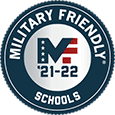Before operating a forklift, a significant amount of training, practice, and inspecting should be performed. Forklifts are most commonly used in warehouses but are certainly not limited to warehouse use. The confines of a warehouse often make forklift operation dangerous, as you are likely to be moving heavy objects in tight spaces. Here is a complete guide on how to operate a forklift.
Classes of Forklifts
There are seven distinct classes of forklifts, each of which requires an operator to be certified for it. Forklift classification is dependent on several factors such as its fuel, features, and applications of use.
Class 1: Electric Motor Rider Trucks
A class one lift uses an industrial battery to power its transistor motor controller, which allows it to perform its functions. You can find this class of truck in loading docks, storage facilities, and anywhere in between. One thing about this class is that its mainly used in indoor settings, where the floor is smooth but can be used outside in dry conditions.
Class 2: Electric Motor Narrow Aisle Trucks
Similar to a class one lift in that it makes use of an industrial battery and its main use is in an indoor setting, what separates this class is its application. As implied in the name, this class of forklift is best used in narrow spaces. Its design allows an operator to quickly and efficiently maneuver in narrow aisles.
Class 3: Electric Motor Hand or Hand-Rider Trucks
For class 3 forklifts, the operator controls the lift from the rear. This means the operator uses a steering tiller to control the lift’s movements by moving it side to side. A class 3 trucks are battery-powered. Another name for this class is jack pallets, and they are mainly used indoors for short distances.
Class 4: Internal Combustion Engine (ICE) Trucks With Cushion Tires
Internal combustion engine (ICE) trucks are mainly found in dry, indoor settings. ICE trucks transport pallet loads to and from storage or loading areas. Since these lifts use cushion tires that are lower to the ground than pneumatic ones, they can be used in low-clearance settings. ICE trucks often use fuel such as gasoline, diesel, or LP gas.
Class 5: Internal Combustion Engine Trucks with Pneumatic Tires
ICE trucks with pneumatic tires have versatility in that they can be used in practically any setting, indoors or outdoors. You can find this class of lift mostly in warehouses, and they can be used to carry a variety of loads, with a range of 3,000 up to 55,000 lbs. For fuel, these trucks mainly use Compressed Natural Gas (CNG), diesel, LPG, or gasoline.
Class 6: Electric and Internal Combustion Engine Tractors
Often referred to as tow tractors or tuggers, class 6 lifts can be used in a variety of settings. Interestingly enough, you can choose to use a battery for indoor use, or switch it out for an internal combustion engine for outdoor use.
Class 7: Rough Terrain Forklift Trucks
Class 7 lifts are often equipped with large tires that allow them to move over rough surfaces, as the name implies. These typically diesel-powered trucks can mainly be found on construction sites, lumber yards,
Forklift Certification Guide
Pre Operation Guide - Include Pre-Operation Inspections
An operator must first run through a pre-inspection list before using any class of forklift. The checklist will vary depending on the exact class of forklift you are using, but below you will find a general list of things to check. If a forklift does not pass inspection, do not use it and mark it as out of service. There may be additional things to check depending on the class of lift.
- Check oil level
- Check water level
Check Hydraulic fluid level - Check Hydraulic hoses
- Check mast chains
- Check tires & pressure
- Check forks condition
- Check loaded backrest extension
- Check finger guards
- Make sure safety decals & nameplates are in legible
- Check for operator manual
- Check operator compartment for debris or gunk.
- Check safety belt and all safety devices
How To Operate a Forklift - Traveling and Maneuvering
Once your lift has been cleared by inspections, it is time to learn how to operate the forklift. While forklifts are vehicles, they are unlike cars in that there is a separate set of forklift operation rules you must follow. To start the forklift, first put it in neutral, press the brake, and turn the key.
Next, you’ll want to pull the leftmost lever toward you, which raises the forks off the floor. You should pull the middle lever toward yourself to tilt the mast toward the lift.
To travel, release the parking brake and move the directional lever toward your intended direction. If you will be going in reverse, make sure your siren is working.
Once you are moving, and before you move in any direction, make sure your path is clear. You should also give your horn a honk when near intersections, entrances, and exits.
Before you attempt to move or lift something, adjust the forks using the left, middle, or right levers. Moving slowly, pull forward towards the load, and place the lift in neutral.
With the parking brake set, inspect the load to make sure it is centered, and lift the load by pulling the leftmost lever toward you. It is helpful to keep the load low to the ground to keep the vehicle’s center of gravity low.
When transporting the load, continue to keep your eyes open for obstructions and people. If the load is large enough to block your view, drive the lift in reverse. In order to reduce strain on the lift, lower the forks to the ground once you have it in place.
Finally, after correctly using the forklift, you are ready to dismount. First, turn off the forklift, place the directional lever to neutral, and set the parking brake.
Common Forklift Safety Hazards
There are a number of hazards related to forklift operation. These range from speeding to tipping over and everything in between. Below is a list of common ones with solutions on how to avoid them.
Speeding – forklift’s are dangerous vehicles, and just so should not be used for racing, taking sharp corners, or other related improper uses
Bystanders – anyone in your work area, whether they are supposed to be or not, present a hazard. Use your horn to notify bystanders before entering, exiting, or moving through an intersection.
Loose Loads – loose or unsecured loads present a danger when moving materials around. Never attempt to move an unsecured, off-center load.
Maintenance – a Lack of Maintenance increases the chances of an accident occurring. If you notice malfunctioning alarms, lights, or any other part of the lift, do not use it until repairs have been made.
Ground Conditions – slippery/slick surfaces and/or debris on the floor present a skidding hazard for forklifts. Keep the floors clean and clear of debris that may impede the vehicle
Inclines and declines – when transporting a load keep the heavy end uphill. Keep the load in front when going up a ramp and drive in reverse going down a ramp with the load. Never attempt to turn on a ramp, and if you must park on an incline set the parking brake and chock wheels
Over Loading – never attempt to lift more than your truck’s capacity, always know your forklift’s data plate before loading.
Clearance – travel with the load lowered 6-8 inches off the ground to avoid accidentally ramming it into doorways and fixtures.
Programs at HEC
Interested in learning more about how to operate a forklift or other heavy equipment commonly used in construction and manufacturing? Then the Heavy Equipment Colleges of America have the program for you. The instructors at HEC can train you to use commonly used cranes and heavy equipment, road construction, site management, and more!
All HEC locations have programs geared for students, but programs vary by location. The variety of programs give students at HEC an edge, and the combination of book learning plus practical experience makes it great for beginners and those with some experience in the field.




